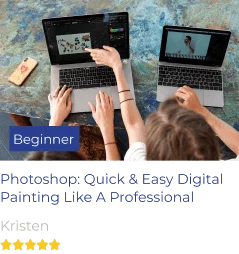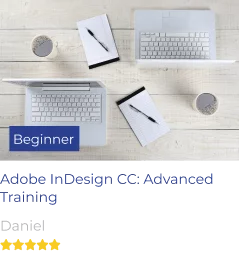With the growing demand for online learning, the need for freelance instructional designers has skyrocketed. The competition in this field is extremely high as well — it’s not enough to learn visual design principles and a few learning theories to stand out and reach the top.
In this article, we’ll explore the key skills that instructional designers need to have and the strategies they should follow to thrive in this ever-evolving field. So, whether you’re a novice instructional designer or making the switch from a 9-to-5 to freelancing, get ready to take your career to the next level!
What Is an Instructional Designer?
An Instructional Designer (ID) is a professional who designs and develops learning experiences. They use learning theories, instructional design models, and technologies to create courses, programs, and other learning resources. They also collaborate with subject matter experts, educators, and other stakeholders to ensure that the content is accurate, relevant, and aligned with learning objectives.
Overall, IDs play a critical role in promoting effective learning and improving its outcomes in various settings, from K-12 education to corporate training and beyond.
Is Freelance More Difficult Than a Full-Time Job?
Working as a freelance instructional designer can be both easier or more difficult than a full-time job, depending on various factors.
On one hand, freelancing offers more flexibility in terms of schedule and work location. Freelancers can choose their projects and clients, which can lead to a more diverse and fulfilling portfolio. They also have the opportunity to set their rates and potentially earn more than they would in a full-time job.
However, freelancing also comes with its own set of challenges. As an ID freelancer, you are responsible for finding your own clients and projects, which can be time-consuming and require significant networking and marketing efforts. You may also experience fluctuations in workload and income, which can be difficult to manage.
The Top 3 Skills Every ID Freelancer Should Have
It goes without saying that to become an instructional designer you need to have a high level of expertise in learning theories and assessment methods – and be able to apply these concepts to real-world projects. Apart from that, let’s take a look at the skills that are mentioned less frequently but are essential if you’re working for yourself.
Research Competence
Working as an instructional designer requires a great deal of research because the first step in developing any project is devoted to analysis. IDs conduct industry analysis, as most of the freelance projects are in areas where they may have no expertise, such as medicine or construction.
Beyond the industry, IDs look at the context of specific projects to identify actual training needs and better understand target learners, including their needs, preferences, and learning styles.
Project Management
Freelance instructional designers are responsible for managing their own projects, from initial scoping and planning to final delivery. So, if you’re not good at setting deadlines and have poor organizational skills, you’ll find it difficult to work as a freelancer without some kind of supervision.
To run their own one-person business, instructional designers need to have strong project management skills, including self-discipline, the ability to set timelines and milestones, meet deadlines, and manage resources effectively. They also often have to manage multiple projects simultaneously and prioritize tasks according to deadlines and client needs.
Sales and negotiation skills
Being a freelancer means that you are your own marketing and sales team, your own account manager, and your own boss. Your success largely depends on the ability to sell your services and negotiate with clients.
You should have basic marketing skills and be able to define your value proposition and determine your target audience. A clear value proposition can help you differentiate yourself from other instructional designers and make a stronger case as to why clients should choose you. If you know who your clients typically are, you can develop a plan for how you will reach out to them.
In terms of negotiations, to establish productive working relationships and keep clients over the long term, you should always focus on win-win outcomes and aim to find solutions that benefit both you and your client.
5 Strategies That Will Help You Succeed as an ID
Freelancing is a vast and challenging space to navigate alone. However, by applying the following strategies, you’ll be able to overcome most obstacles and achieve success in instructional design more quickly.
1. Define your niche
Pick one or a few areas rather than position yourself as a jack-of-all-trades. It will help you:
- Reach a specific audience. You can focus your marketing efforts and tailor your message to a specific audience to make it easier for potential clients to find you.
- Increase earning potential. You can charge more for your services, as clients will perceive you as an expert in that field.
- Reduce research time. If you focus on one or two topics, you’ll reduce the time you need to explore a new area each time. This will help you get a head start and then increase your expertise in the industry.
To choose a niche, consider your strengths and experience, as well as the needs of the market. For example, you can focus on a specific sector, such as corporate or academic, or choose a particular area of interest like healthcare or IT and boost your expertise in this field.
2. Run an expert blog
If you don’t have a professional blog yet, you’re losing out. Online activity can be highly beneficial for instructional designers, mostly because it helps to:
- Show your expertise. You can share your knowledge and experience, publish client testimonials, and enhance your credibility as a professional. When potential clients search for instructional designers, they may come across your blog, be impressed by your expertise, and choose you for their next project.
- Demonstrate your professional skills. By running a blog, you can demonstrate your proficiency in writing, research, and content creation and, thus, show your potential clients that you have the necessary skills to create effective instructional materials.
- Build a network. You can find strong professionals in the ID field and attract like-minded individuals to build a network of contacts that can be beneficial for your career.
3. Chose reliable ID software
Authoring software is one of the key tools that instructional designers use on a daily basis. But if your software is too limited in functionality, sometimes fails, or is too complicated, you’ll find it difficult to show off your full potential as an instructional designer. So, choose reliable yet intuitive software, especially if you’re just beginning your career.
For example, one of the tools you can count on is the iSpring Suite authoring toolkit. It works directly within PowerPoint, so creating online courses is pretty similar to building a presentation.
Using this tool, you can easily enhance your slides with interactive diagrams and timelines, create comprehensive knowledge assessments with smart quizzes, build engaging role-plays, and record professional-looking video lectures.
The tool comes with plenty of ready-made templates and a huge collection of characters and backgrounds, so it will save a great amount of your time and energy, and prevent you from burning out from working on several projects simultaneously.
4. Collaborate
While there are benefits to working solo, here are some of the advantages you can get from collaboration:
- Improve the quality of your projects. You may not be a specialist in all things in the ID field, so network with people who can help with a particular area of expertise. You can partner with motion designers, voice-over artists, and video editors to fill in your skill gaps or meet high client demand.
- Attract new clients. Professional contacts can refer clients to one another and open up new avenues for collaboration and work.
- Get inspiration. Brainstorming with other professionals can spark new ideas and approaches that might not have been considered otherwise. This can result in more innovative and engaging learning experiences for the end users.
5. Don’t fall behind
As a freelancer, nobody has a greater interest in your professional development and career progression than you do. Invest your time and energy in boosting your competencies: read books about instructional design, attend professional conferences, and follow expert blogs to keep up with trends. In doing this, you can ensure that your design and methodology solutions are cutting-edge, engaging, and effective.
To Wrap Up
Success in any field doesn’t happen overnight. But by honing your skills, networking with other professionals, and keeping up to date, you can stay motivated and energized as you meet the challenges of freelance work.
We hope our tips will help you thrive as a freelance instructional designer and enjoy a fulfilling career in this growing field.




